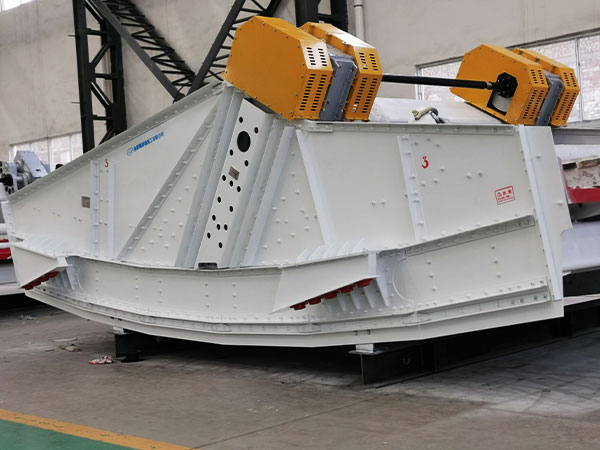How to deal with the dust from the vibrating screen? Causes and treatment measures
Mine vibrating screens are generally large-scale screening equipment with a certain weight. And during operation, due to the mutual collision and friction of materials, such as ore, a large amount of dust is easily generated, and then there is a problem of flying dust.
Generally, the dust from the vibrating screen is distributed densely, not only on the screen surface, but also a certain amount of dust will be scattered at the screen surface gap and the feed inlet, which is very unfriendly to the working environment of the operator and has certain hazards. , Then how to deal with the dust from the vibrating screen?
Causes of dust from vibrating screen

1. A large amount of material accumulation
Because a large amount of materials are accumulated in the feed inlet of the vibrating screen, more dust is generated. Especially for the vibrating screen with a large output, such as the mining vibrating screen of about 1,000 tons, the dust problem is very much.
2. The interface is not well sealed
(1) The interface is the discharge port of the vibrating screen and the sealed interface of the receiving equipment. This place is not well sealed and connected, which will cause the vibrating screen to fly in dust. If necessary, a sealed soft connection should be made at the discharge port, and computer intelligent control is adopted to realize automatic discharge without manual, which can greatly reduce dust escape during the discharge process.
(2) The sealing cover (dust cover) of the vibrating screen and the box body are usually fixed by bolts, and it is inevitable that there will be fine gaps between the sealing dust cover and the box body.
3. The vibrating screen vibrates strongly
During the operation of the vibrating screen, due to strong vibration, a large amount of dust will also be generated. On the one hand, the outside of the equipment must be sealed, and on the other hand, the dust removal equipment on the equipment is also very necessary.
Measures to deal with dust from vibrating screen

1. It is possible to add a closed silo and the feed inlet to the top of the equipment for a sealed connection to reduce the probability of external exposure of the raw materials. The belt conveyor belt inside the silo can also speed up the material transmission.
2. The tilt angle of the vibrating screen, the vibrator is placed at an angle of 45°. In this way, the material can be pushed forward, and horizontal ribs can be added to the pipe if necessary, so that even an upward slope will not hinder the feeding of the material and will not generate more dust.
3. The gap between the dust cover and the box body should be minimized as much as possible, so in the daily work process, it should be tightened continuously to avoid the escape of dust due to loose parts.
4. In daily production, remember to check the fasteners of the vibrating screen regularly to avoid additional vibration due to the loosening of individual components. Do regular maintenance and repair of the vibrating screen equipment daily to ensure the operating status of the screening equipment The key to health.
Misunderstandings in handling the dust of vibrating screen

To deal with the dust problem of the vibrating screen, some users will choose to add negative pressure to solve this problem. This is actually a misunderstanding, because the dust problem of the screening operation is generated by the vibrating screen itself, and the dust generated by the vibration of the vibrating equipment itself is actually very limited. Yes, only adding negative pressure to the vibrating screening equipment cannot solve the dust problem in the screening workshop. It needs to be analyzed and controlled from the aspects of feeding, receiving, and transportation.
The source of the dust problem of vibrating screen
From the above analysis of the cause of the dust problem, the main source of the problem comes from the following two aspects:
1. Feeding dust: it has a direct impact on the feeding tools on site, the dust generated by manual feeding, the dust generated by the equipment feeding equipment connection without a sealed soft link, and the dust generated directly.
2. Material splicing and dust: The same is caused by manual splicing without protection, and the splicing equipment is not well sealed and connected.
The above is the answer to how to deal with the dust from the vibrating screen. Only by doing a variety of treatment and protective measures can the dust hazards of the vibrating screen be reduced.



